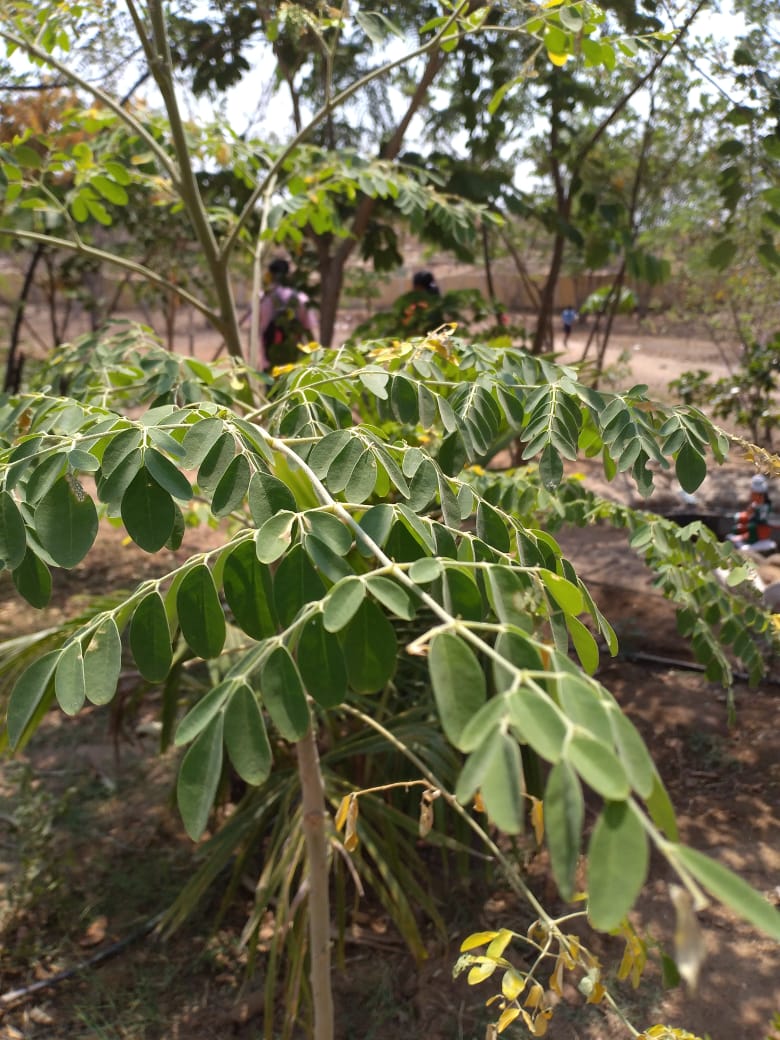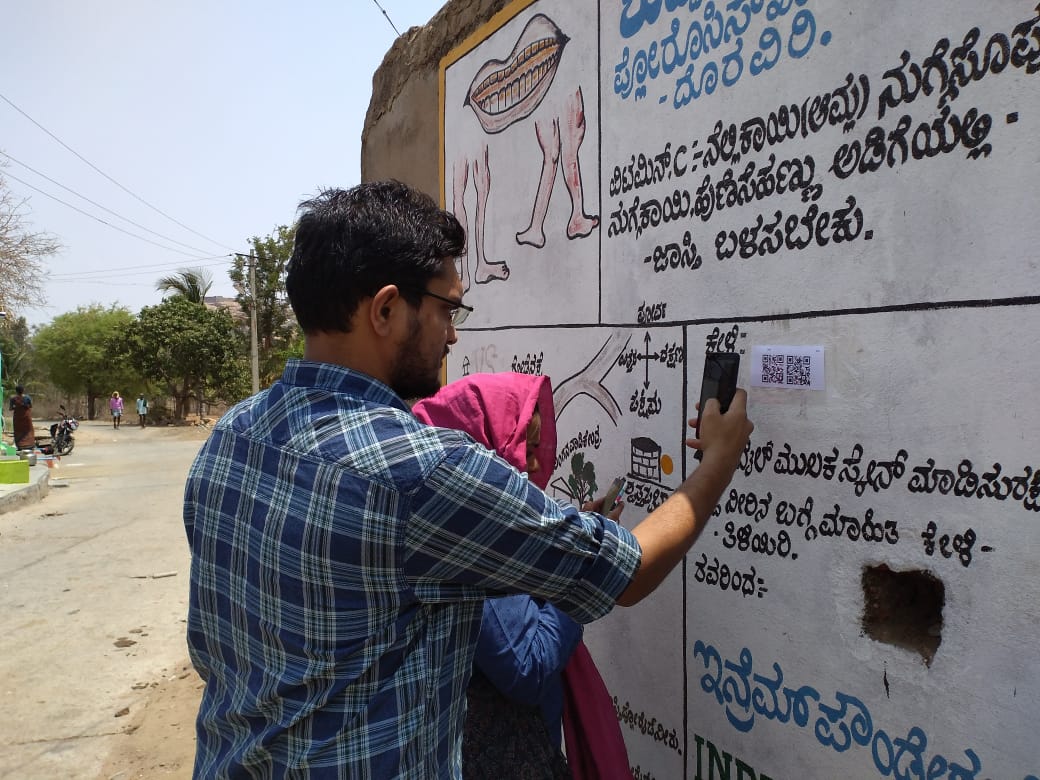Chikkaballapur is a district in the state of Karnataka, just north of the capital Bengaluru. A peri-urban area that was once an agricultural centre for this region, today Chikkaballapur is facing a unique problem.
Decreasing rainfall has meant increasing periods of drought for this area, which in turn has caused residents to dig deeper and deeper in search of water. In this pursuit for groundwater, they have found water… but it is contaminated with fluoride.
The administration tries its best to provide tanker water to supplement the piped water supply in the area. But when the tankers are not able to reach the entire district, and overhead tanks have long dried up, people here have to walk as far as 10 kilometres just to get water.
Reverse Osmosis or RO plants have been put up in Chikkaballapur, to remove the fluoride from the water. In Bagepalli taluk of Chikkaballapur, where INREM Foundation is working on the fluoride problem, these RO plants are on an average, at a distance of 5 to 7 kilometres from many fluoride affected villages. The cost to get water from these RO plants comes to about Rs. 20 for a can of 20 litres of water, which includes Rs. 15 for transportation. However, many do not like to drink this water because they don’t like the taste. On an average around 30% of people use the RO water for drinking, while others continue to use groundwater with high levels of fluoride, coming through pipes to public standposts.
There is a high prevalence of dental fluorosis among children in this area, of degrees varying from mild to severe. There is reasonable awareness about dental fluorosis and fluoride in drinking water in the area, thanks to the efforts of INREM and the Fluoride Network.

INREM used Safe Water Learning Cards in anganwadis in Bagepalli, to spread awareness on fluoride contamination in groundwater. And they didn’t just stop there - they went a step beyond just awareness generation, assessing what anganwadi workers had learned in the session, and whether or not they had understood the knowledge imparted to them.
A small safe water quiz was conducted with the children after the learning session, with the help of a free app called OMR Evaluator. OMR is an efficient and useful tool for assessments, particularly in areas with poor internet infrastructure and large numbers of learners. How it works is that assessment questions are entered into the app, and an assessment sheet is printed out for each student. The students respond to the questions on the sheet, which is then scanned on the OMR app. The results are instantly tabulated through the app, reducing the need for manual checking of answers.

Schools in Bagepalli receive RO water for drinking, for which teachers personally contribute transportation money so the water reaches the schools. INREM Foundation is also attempting to improve access to safe drinking water to these children from nearby RO plants, with the help of the District Administration, by meeting the expenses of buying the cans from the RO plant as well as delivering the cans to the schools, through a combination of public and private funds. This would mean that well-meaning teachers don’t have to pay for such vital necessities from their own pockets.
The nutrition link
 Nutrition plays an important role in mitigating the adverse health impacts of fluoride in water. Basic dietary improvements to include calcium rich green leaves, milk, eggs, and rich sources of Vitamin C and antioxidants such as amla (gooseberry), lemon, palak (spinach) and local sources such as moringa (drumstick) and Cassia Tora, go a long way in reversing the effects of fluoride in the long term.
Nutrition plays an important role in mitigating the adverse health impacts of fluoride in water. Basic dietary improvements to include calcium rich green leaves, milk, eggs, and rich sources of Vitamin C and antioxidants such as amla (gooseberry), lemon, palak (spinach) and local sources such as moringa (drumstick) and Cassia Tora, go a long way in reversing the effects of fluoride in the long term.
In these schools in Bagepalli, because awareness on the fluoride contaminated water in the area has increased, schools are doing what they can with support from groups like the Fluoride Network, to put such solutions in place. Morninga (drumstick), amla and other saplings are being planted in the schools, as nutritional reinforcements for the children.
Mid day meals provide milk 5 days a week in these schools as well. The milk is made with Nandini milk powder mixed with water; however the water used for this is not RO, but is from the fluoride-affected water from borewells.
While this may sound counter-intuitive to the implementation of solutions that mitigate the harmful effects of fluoride contamination, we must understand that simple things like the taste and colour of water greatly influences people's choices. Human behaviour is not always rational. As development practitioners, we must design and conceptualise for solutions that take such variabilities into account.
Innovating awareness building
Going beyond the traditional methods deployed by NGOs to spread awareness among local communities, the Fluoride Network came out with a Speaking Wall or Suno Bolo - building on traditional wall paintings that are often used in rural areas to communicate with local communities. The Speaking Wall in Bagepalli enables two way communication between people on the ground and knowledge on fluoride contamination in water.

As depicted in the pictures above and below, the Speaking Wall is designed in four quarters. The top two focus on the problem and solution, or the problem statement and the awareness message to be communicated to the people of Bagepalli, in the local language.
The bottom part of the wall depicts a map of the village marked with coloured dots indicating the levels of fluoride found in the village. The bottom right quadrant has interactive features like a QR code, which when scanned with a smartphone camera, leads to multimedia learning resources on fluoride contamination in water, localised to that particular place. One QR code leads to a multimedia learning resource that disseminates an audiovisual message on the importance of safe water - hence called Suno or listen in Hindi - where the user can listen to the message. The other QR code is called Bolo (speak in Hindi), where users can share a pre-recorded audio.

While interacting with Suno and Bolo, users can be continuously engaged and encouraged to share their thoughts or grievances, or even ask questions.
On ground implementation of the Speaking Wall has thrown up some challenges. For one, Internet speeds across rural India are still slow or non-existent, so the multimedia content that the wall takes the user to, takes time to load or is difficult to access. Smartphones are also not very frequently used, with most people in rural areas using feature phones.
Yet, this is an innovative and fresh approach to generating awareness on issues such as water contamination, which is often the leading cause of public health problems and which can be easily prevented, with knowledge and awareness of the root cause. More thinking like this is critical, if we are to collectively solve for our society’s most complex problems.
Special thanks to Kiran Kumar Sen and Dr. Sunderrajan Krishnan from INREM Foundation and to Karthik Seshan from Arghyam, for this story.
Learn more about the Fluoride Network here.













